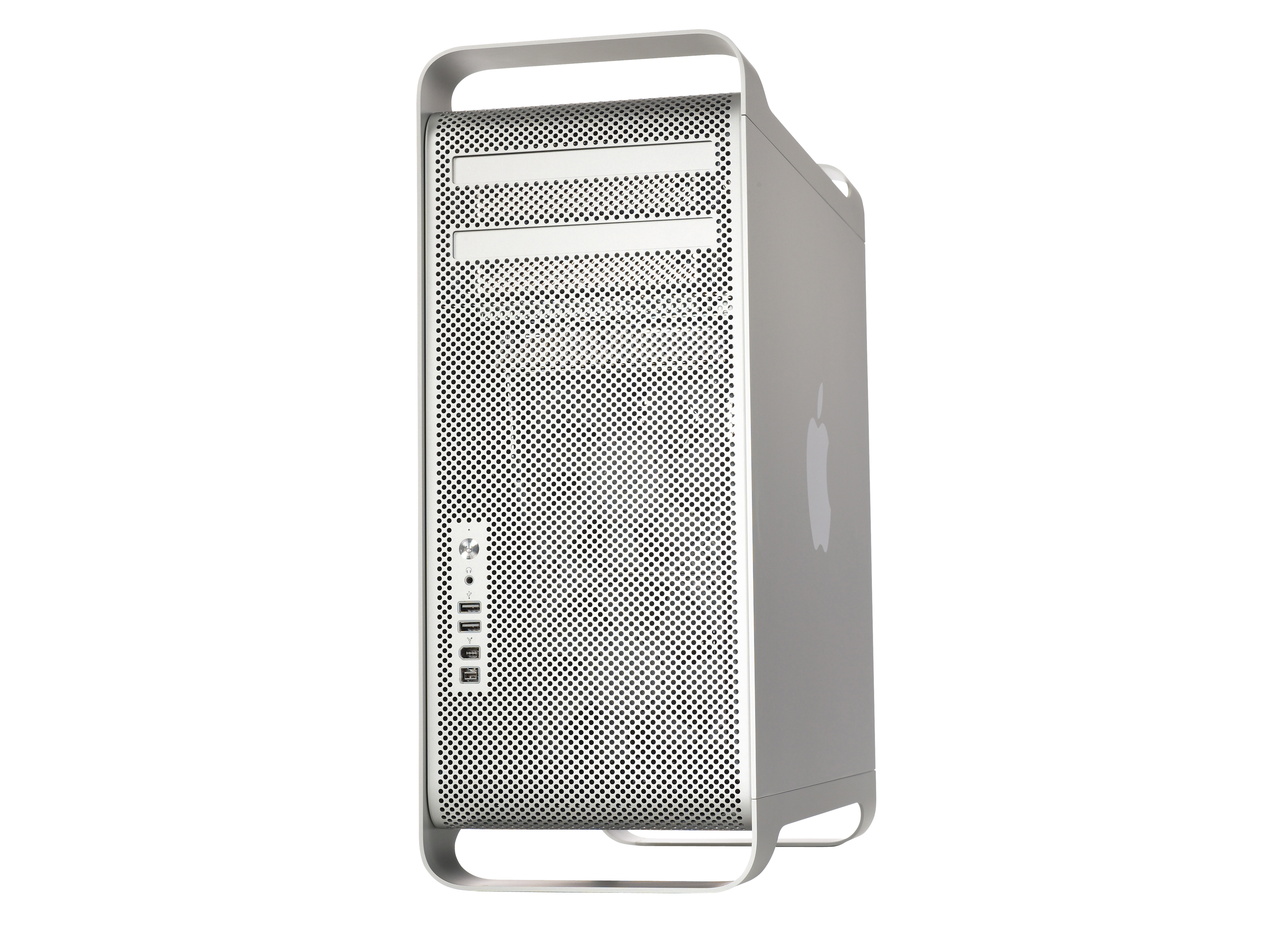TechRadar Verdict
A magnificent machine but there are very few practical applications at present
Pros
- +
Massively powerful
Superb performance
Reasonably good value
Cons
- -
You're unlikely to need so much grunt
Why you can trust TechRadar
Since announcing its intention to move to Intel chips two years ago, Apple has been keen to keep apace with the processor developments of the Windows-based mainstream. Although it took Apple six months to outfit Intel's Core 2 Duo technology to its mobile platforms, its desktops have kept up with Intel's roadmap almost nanometre for nanometre.
The announcement, then, that Apple was going to be the first manufacturer proper to release Intel's Xeon 5300 'Clovertown' processor - Apple's first 8-core configuration - came as a slight surprise and devoid of the rumour and speculation that tends to pre-empt any new Apple release.
The new Xeon processor makes the Apple Mac Pro 8-Core something of a specialist interest - namely, CAD users and creative types working with processor-intensive 3D and video projects. Even for hefty Photoshop tasks, the four processors running at 3.0GHz on each chip is somewhat overkill.
Mac v Mac
First, we look at the performance difference the Clovertown chips bring to the Mac Pro. Having benchmarked the last quad-core offering from Apple in December 2006 - which features two 2.66GHz dual-core Xeon's and 4GB or RAM - we can draw a general, but straight conclusion as to what a full-blown 8-core Mac Pro delivers.
The first task we set the 8-Core was a well-worn Photoshop CS2 benchmark. This involved an automated script that applies filters, adjustments and edits to a 250MB, 300dpi, multilayered PSD file.
Where the quad-core Mac Pro took almost three minutes to perform the tasks, the 8-Core Mac Pro flew through the benchmark in just under two minutes. Remember, though, that Photoshop CS2 is both non-native and RAM intensive to both machines, and when the same benchmark was applied in Photoshop CS3 beta - a now native application - the benchmark was set at a hugely impressive one minute and 26 secs.
And while a proportion of this speed increase can attributed to Photoshop's Intel chip support on the Mac, the fact that the 8-Core Mac Pro almost halved the CS2 benchmark of the quad-core is testament to the power increase the Clovertown chips bring.
However, as we mentioned earlier, no matter how large, unwieldy and awkward the Photoshop benchmark is, it's still far from pushing the 8-Core Mac Pro.
In fact, even Adobe's motion graphics app, After Effects, has some way to go before saturating the Clovertown chip's throughput. What After Effects does offer, however, is a real chance to benchmark the Mac Pro against itself, with the addition of Nucleo Pro - an After Effects plug-in that facilitates multi-core processing.
After Effects is still non-native, however, but even so its initial score at rendering a ten-second HD video clip was just over four minutes. But the real magic happens with the activation of Nucleo Pro, where exactly the same file was rendered non-natively in After Effects in an astonishing one minute 48 secs. In other words, by utilising multithreading, the 8-Core Mac Pro is over twice as fast.
Graphical goodness
By now the picture should be coming through sharp and clear: this is a very powerful machine that's perfect for doing video-editing and 3D work. Or would be, should any of the professionally levelled 3D applications be available on OSX, or Apple offer the kind of configuration options specialist-build manufacturers do.
As it stands, Autodesk's 3ds Max, and Softimage's XSI aren't Mac orientated, and even Maya and LightWave aren't native yet. A LightWave update has been touted for some time, but, even so, for Apple to launch an out-and-out video editing and 3D rendering machine - which for the price is precisely what the 8-Core Mac Pro is - seems a mite optimistic on Apple's part.
Given these considerations, we benchmarked the Mac Pro with Cinebench 9.5, a freely available utility that invokes Maxon's Cinema 4D to score. Here, the 8-core scored an impressive 2,321 points, certainly the highest score we've seen in a mass-produced unit.
Much of the reason for such a score can be put down to the on-board Nvidia Quadro FX 4500 graphics card. It's the highest specified card you can configure the 8-Core Mac Pro to include on Apple's site, yet it still leaves a gap between the core user and the professional video and 3D editing market. An FX 5500 or 5600 or any ATi Fire GL would be the choice of anyone wishing to use this as a serious video workstation and who has the kind of budget this Mac Pro demands.
That said, the 8-Core Mac Pro does offer something of a bargain. Compared to a similarly specified PC, Apple has kept the price in check. In fact, compared to some specialist build workstations, the 8-Core Mac Pro is something of a bargain. If you know what you want to do with it.
